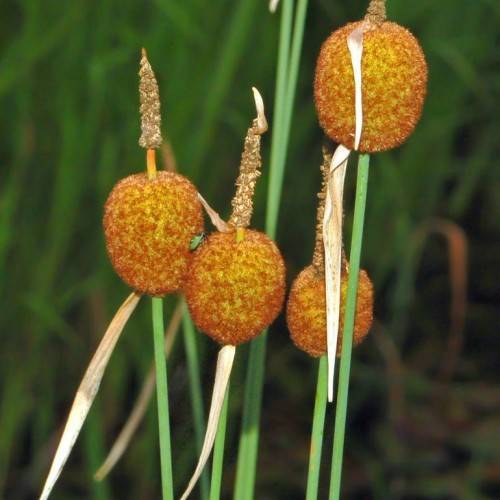
bullrush
Typha minima
Cycle:
Herbaceous Perennial
Watering:
Frequent
Hardiness Zone:
3 - 10
Flowers:
Flowers
Sun:
Full sun,part shade
Leaf:
Yes
Growth Rate:
Low
Maintenance:
Low
Drought Tolerant:
Yes
Salt Tolerant:
Yes
Invasive:
Yes
Care Level:
Low
watering
Bullrush should be watered every 7-14 days, depending on the climate it is growing in and the growth stage of the plant. In hot and dry climates, it should receive around 1.5 inches (4 cm) of water every 7 days; in cooler climates, 1 inch (2.5 cm) of water every 14 days. Watering should be done late in the day to allow time for the foliage to dry before nightfall. Soil should be kept moist but not soggy. It is a good idea to check the soil regularly to ensure proper watering.
sunlight
Bullrush grows best in full sun and requires at least 4 hours of direct sunlight each day. This species is native to wetlands and can survive in shallow water with mud and sand. They will thrive in full sun areas of a wetland, but can also tolerate partial shade with reduced growth and flowering. Bullrush can also tolerate brief periods of total submergence for a few days or up to a month without harm.
pruning
Bullrush should be pruned every 2-3 years. Pruning should take place in early spring, before the new growth appears. Start by removing any dead or damaged stems and cut back any excess foliage. Next, prune back the stems to the desired shape and size. This will encourage the plant to produce fuller, bushier growth in the following season. It's important to leave some foliage so that the plant is not weakened. Finally, water the plant well and fertilize it after pruning to help the regrowth and give the plant a boost.
